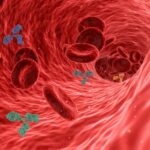October 07, 2025
3 min read
Key takeaways:
- AMD was less likely among married, Black, Asian, and gay, lesbian or bisexual individuals.
- Vision loss due to AMD was more likely with older age, poor health and functional disabilities.
Being divorced, white and heterosexual are among the social determinants of health that raise the odds of having age-related macular degeneration, according to a study published in Retina.
“The progressive nature of AMD poses a significant burden on both patients and health care systems, with profound psychosocial and economic impacts,” Ryan S. Huang, MSc, MD(C), of Temerty Faculty of Medicine at the University of Toronto, and colleagues wrote. “Several risk factors have been associated with AMD, including smoking, sun exposure, age, sex, diet and individuals with lighter eye colors. However, the influence of social determinants of health such as income, access to health care and educational attainment on AMD outcomes remains underexplored.”

Huang and colleagues analyzed data on 14,267 U.S. adults aged 50 years or older, with 668 (4.7%) reporting being diagnosed with AMD, from the 2017 National Health Interview Survey.
The researchers used univariable and multivariable logistic regression models to assess the relationship between social determinants of health, including economic stability, access to health care and education, personal demographics and environmental context, and diagnosis with AMD or vision loss secondary to AMD.
The odds of AMD were greatest among participants aged 81 years or older compared with people aged between 50 and 60 years, according to the multivariable analysis.
Vision loss due to AMD was more likely to be reported among:
- participants aged 81 years or older compared with those aged 50 to 60 years;
- participants reporting poor health compared with those in good health; and
- participants reporting functional disabilities compared with those without.
Compared with married participants, those who were divorced, separated or widowed were significantly more likely to have AMD. Those who were employed were less likely to have AMD than those who were unemployed.
“Divorce has been associated with increased mortality, and further investigation into potential third-variable explanations, such as lifestyle or behavioral changes after separation, could be useful in informing targeted interventions for high-risk individuals in the context of AMD,” Huang and colleagues wrote.
Black/African American participants and Asian participants had lower odds of AMD than white participants, and AMD was less likely among gay, lesbian or bisexual participants compared with heterosexual participants.
“The current literature does not consistently show correlations between genetic factors and AMD prevalence across all races, suggesting that these influences are population-specific rather than race-specific,” the researchers wrote.
“Previous literature suggests that sexual minority individuals (gay, lesbian or other) are more likely to access health care, which may lead to better management of risk factors, potentially mitigating the development of AMD,” they added. “In addition, since the risk of AMD increases with age, it is possible that older adults may have reported their sexual orientation differently because of perceived stigmas, further influencing this finding.”
Huang and colleagues suggested several potential public health interventions to lessen the impact of AMD, including:
- outreach programs targeting people with chronic diseases;
- making eye care part of the routine management of patients with systemic health issues; and
- improved transportation options and home-based eye care services.
“Enhancing physician awareness of these social determinants, coupled with targeted public health initiatives, will be essential for promoting comprehensive AMD care and reducing disparities in ocular health,” they wrote.










